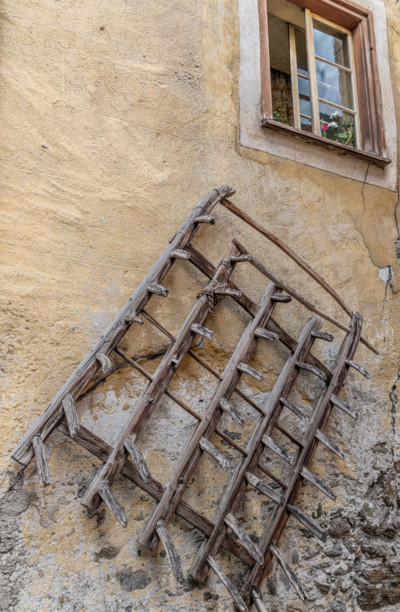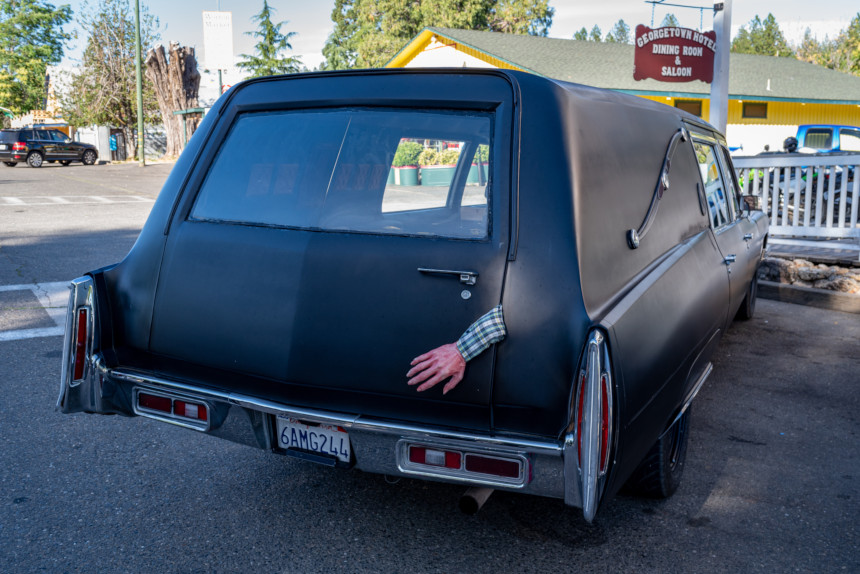A noun describing a funerary vehicle and a verb from the world of theater: Though hearse and rehearse look to be separated by only a common prefix, their similarity must surely be one of those weird happenstances of language change, right?
Yes and no. Though the words underwent major changes in other languages before they were adopted into English, they nonetheless share the same etymological root.
For millennia, before planting a new crop, farmers would drag an agricultural implement through the dirt to both break up and level out the soil. Before the Industrial Revolution, a farmer might use a large wooden rake to prepare a small area, but for a larger field, one might drag behind a horse or ox a contraption comprising a solid, flat frame with wooden or iron spikes along the bottom that would project into the earth and turn it over.
In English, we call this tool a harrow. In Latin, it was called a hirpicem, then in Medieval Latin a hercia, and then in Medieval French a herce. You might be tempted now to connect the ideas of gouging into the earth and burying bodies beneath it to get from a harrow to a hearse, but the course of this word is more nuanced than that:

If you flip a harrow over, it somewhat resembles a crude candelabrum or chandelier (the two words come from the same root, as does candle). People noticed this long ago, and so that French herce also became the name of a triangular frame that held candles, and especially such a chandelier in a church.
For most people, such a herce wasn’t an everyday item. Outside of the church, it would appear on special occasions — like the death of an honored person. In those days, the candle-holding herce might be lighted and hung over the coffin or tomb of a recently deceased noteworthy someone. Through this use the herce became specifically associated in people’s minds with funeral displays, and it’s in this sense that hearse was adopted into English in the late 13th century.
Over time, the label hearse, now completely divorced from its agricultural roots, came to refer to any temporary funeral display, regardless of whether candles were involved. And by the 1640s, we start to find records of hearse used to indicate specifically the vehicle used to carry a dead person to the grave.
At the end of the 16th century, we also find uses of hearse as a verb meaning “to convey a body in a hearse.” Although it’s conceivable that someone whose body was, for whatever reason, disinterred might be rehearsed before being reinterred, that isn’t where rehearse comes from.
Rehearse goes back to the story of the harrow. In Old French, the verb hercier meant, essentially, to plow a field. If the field needed to be plowed again, they had a verb for that, too: rehercier, using the re- “again” prefix. The verb came to be used metaphorically, too. The idea of turning the dirt over again transformed into the idea of repeating or reiterating.
By the time we find rehearse (as rehersen) in English documents, around 1300, it’s being used in the sense of “recite, narrate, or report.” If you were to read this column aloud to someone sitting nearby, you would be rehearsing the story in the old sense of the word.
But the repetition inherent in the re- part of the word wasn’t lost on English speakers. Within around 50 years, they were using rehearse in the sense of “to reiterate or repeat words,” and by the mid-16th century, it had found its current home in the sense of privately practicing a performance, which involves much repetition, and, one hopes, no hearses.
Featured image: Shutterstock
Become a Saturday Evening Post member and enjoy unlimited access. Subscribe now




Comments
Another interesting look at two seemingly unrelated words, at least on the surface. I never would have connected them to agriculture, but there you have it. The now retired mid-70’s Cadillac picture is amusing too, except for that dull black (spray paint looking) exterior I see on regular cars now with the wheels the same. Terrible, but to be expected now.